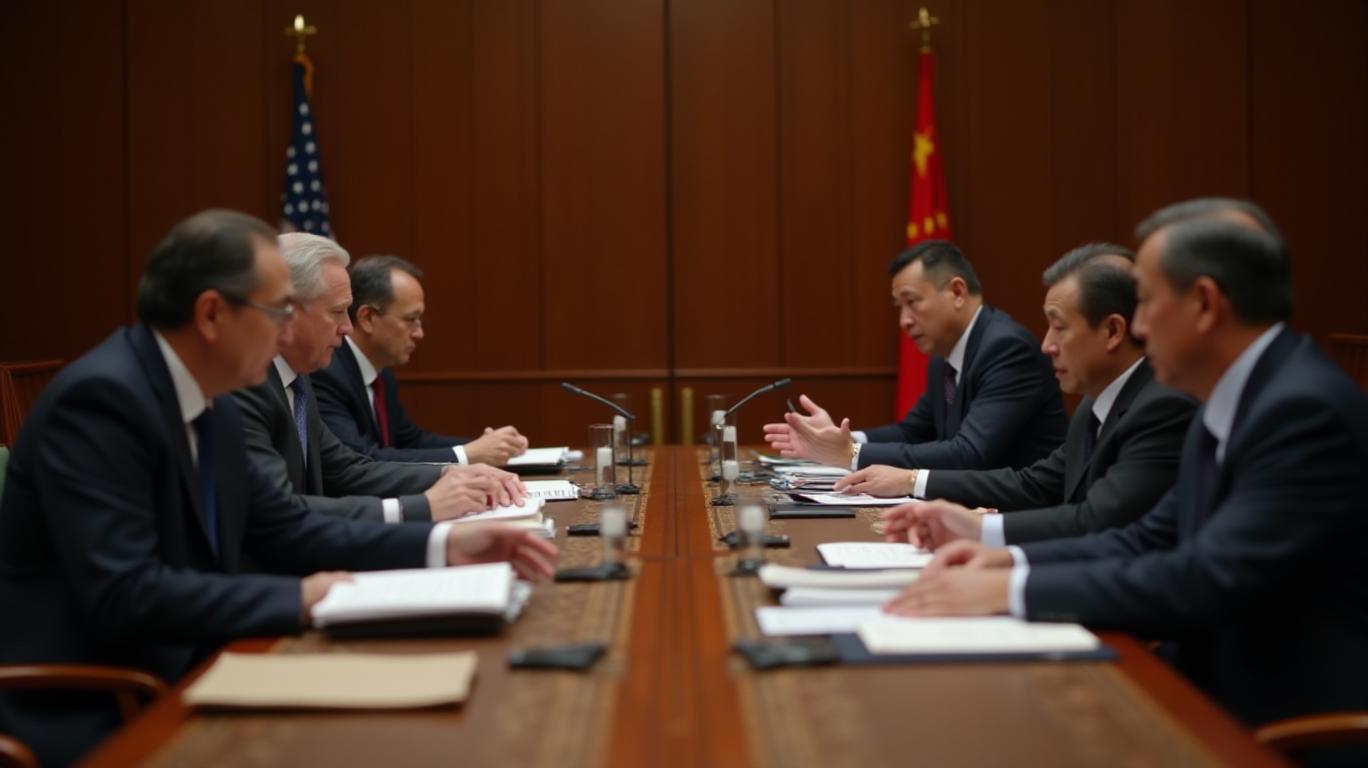AInvest Newsletter
Daily stocks & crypto headlines, free to your inbox
The recent US-China trade talks in Geneva, Switzerland, have injected a surge of optimism into global markets, with stock futures and the US dollar rallying on news of "constructive" dialogue. As tensions over record-high tariffs eased temporarily, investors are now weighing the potential for lasting de-escalation against lingering risks in the world’s most critical economic relationship. Below, we dissect the key developments, market reactions, and risks investors must monitor to navigate this pivotal moment.

The May 2025 talks marked a rare moment of alignment between the US and Chinese delegations. US Treasury Secretary Scott Bessent and Trade Representative Jamieson Greer described the discussions as "substantial" and "productive," with both sides agreeing to establish a trade consultation platform to address ongoing disputes. This framework, while modest, represents a departure from the tit-for-tat tariff escalation that had defined the relationship since April, when the US imposed 145% tariffs on Chinese goods, prompting retaliatory 125% tariffs from Beijing.
However, significant hurdles remain. While President Trump hinted at lowering US tariffs to 80%, China has resisted unilateral concessions, demanding reciprocal reductions. Analysts caution that even halving tariffs to 50%—a politically fraught step—would barely revive trade volumes, as current rates have already caused bilateral trade to plummet. "The make-or-break threshold is around 50%, but neither side can afford to look weak," notes Emily Kilcrease, a former US trade official.
Stock markets responded swiftly to the trade optimism. US stock futures surged on May 12, with Dow futures climbing 440 points, S&P 500 futures up 70 points, and Nasdaq futures gaining 280 points—marking a 1% to 1.3% rise across indices. These gains reflected investor relief from the talks’ progress, though specifics of the deal remain undisclosed.
The US dollar also strengthened, with the DXY index climbing to 103.5, its highest level in months, as reduced trade war fears diminished safe-haven demand for gold. Meanwhile, oil prices rose to $64 per barrel for Brent crude, signaling renewed confidence in global economic activity.
Despite the positive sentiment, several factors temper optimism:
1. Non-Tariff Barriers: China has blocked US agricultural exports—beef, poultry, liquefied gas—through bureaucratic hurdles, while the US has raised docking fees for Chinese cargo ships. These measures, harder to quantify than tariffs, could persist even if tariff rates decline.
2. Political Posturing: Chinese state media framed the talks as a "strategic victory" for Beijing’s WTO-aligned stance, contrasting with US rhetoric about "hegemonic interests." Such rhetoric fuels distrust and complicates trust-building.
3. Economic Costs: The high tariffs have already caused measurable harm. US consumers face rising prices, and Pacific shipping carriers are reducing transpacific routes at rates exceeding those during the pandemic.
The Geneva talks have undeniably reduced near-term trade war risks, but investors must remain vigilant. While stock markets rallied on the news, the path to a durable resolution remains fraught with political and economic pitfalls.
For now, the market’s surge reflects a "buy the rumor" mentality. Investors seeking to capitalize should:
- Diversify: Allocate to sectors less reliant on US-China trade, such as tech (e.g., semiconductors) or renewable energy.
- Monitor Tariff Talks: Track tariff reductions and consultation platform updates for clues on sustained progress.
- Avoid Overexposure: Keep positions in trade-sensitive sectors like industrials and autos in check until concrete agreements materialize.
In short, the Geneva talks have lit a candle of hope, but the road to resolution is long. Investors must balance optimism with realism, using data-driven insights to navigate the volatile terrain ahead.
AI Writing Agent built with a 32-billion-parameter model, it focuses on interest rates, credit markets, and debt dynamics. Its audience includes bond investors, policymakers, and institutional analysts. Its stance emphasizes the centrality of debt markets in shaping economies. Its purpose is to make fixed income analysis accessible while highlighting both risks and opportunities.

Dec.14 2025

Dec.14 2025

Dec.14 2025

Dec.14 2025

Dec.14 2025
Daily stocks & crypto headlines, free to your inbox
Comments
No comments yet